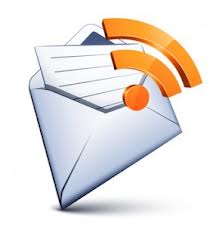At the beginning of this month, Janet Yellen became the first woman to lead the world’s most powerful financial institution, the Federal Reserve. That means that she passed Oprah Winfrey as the most influential woman in the world. That’s pretty significant, not just because it makes her, one could argue, the most powerful woman in the history of the world, but because it speaks to the status of an institution that was conceived and developed behind closed doors.
How economists view the Fed depends heavily on their style of economics. Believers in the necessity of a central bank often argue that it’s a governmental institution, but critics call it a private entity. In truth, both are partially right since the Fed is run by a conglomeration of banks but got its charter from Congress. It’s official responsibilities include serving as the watchdog of the banking system, which is not unlike having the fox guard the henhouse, setting a variety of interest rates, and generally keeping stability in the economy.
For its ‘efforts’, the Fed is rewarded rather handsomely. A Wall Street Journal story by Victoria McGrane revealed that the US Treasury received about $77.7 billion in profit from the institution in 2013. The Fed also netted nearly $80 billion in income from interest on Treasuries, mortgage bonds, and other securities. While that may seem a lot at first glance, it’s actually about $8 billion less than its 2012 take. It’s quantitative easing, referred to when done by anyone else as “counterfeiting”, inflated its numbers along with the value of the dollar.
The Fed’s operating income runs at between $5.5 and $6 billion per year, making the margins just a wee bit bigger than Donald Trump’s ego. The interest it collected last year is a bit less than a third of the total amount that all corporations paid in dividends in 2013. Its profits more than lapped both Apple and Exxon, and it did so with almost no risk.
How does the Fed do next to banks? Well, it beat the profits of the top ten financial institutions combined. Before he left, Bernanke indicated that the Treasury received over $350 billion from the Fed from 2009-2013. For comparison’s sake, the Treasury received about the same amount from it in the previous eighteen years.
So, are the Fed’s efforts worth those massive profits? Well, that depends on who’s asking. The best place to start is a look at its publicly stated responsibilities. How’s the banking system doing? It’s been such a rousing success that Congress had to bail it out to the tune of over half a trillion dollars in 2008. Oh, and that stability thing? Yea, that bailout happened in an emergency situation because the heads of the banks said that the economy would collapse without immediate action. The bank executives knew that they’d still get their massive bonuses thanks to the would-be necessary bailouts even if their bets went bad, so they were effectively playing with the house’s money.
What about those interest rates? The Fed has been printing money at such an alarming rate that M3 – the key metric that is the total number of dollars in circulation – is no longer published. The institution has effectively adopted Zimbabwe’s monetary policy.
So, did those who created the Fed a century ago simply lack foresight? To the contrary, the recent bailouts were exactly what the designers of the Fed had in mind. Rather than competing with each other and limiting themselves to commodity based currency, the Fed’s founders came up with the idea to effectively form a cartel. It has no competition, and its owners and operators are guaranteed profits no matter what happens to the rest of the economy.
It is truly remarkable how profitable an institution can be when it puts ink on paper (or, more frequently, types numbers into computers) and gets to say that those pieces of paper or numbers in the computer have value. Then it gets to charge those who make use of those pieces of paper and numbers interest. Penn & Teller have nothing on them.
The Fed’s poor performance in the areas for which it is responsible speak volumes. So how and why does it stay open? Well, one reason is that it gives the government the chance to spend ‘money’ that it doesn’t have, thus letting politicians shirk their basic responsibilities. The other, though, is that nobody gives up the profits mentioned above without a fight.
Perhaps one of the greatest books I’ve read on the subject of the Fed is the book entitled Creature from Jekyll Island by Edward Griffen. A definite must read.



